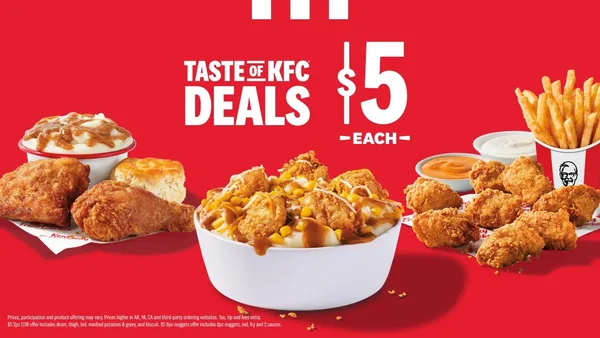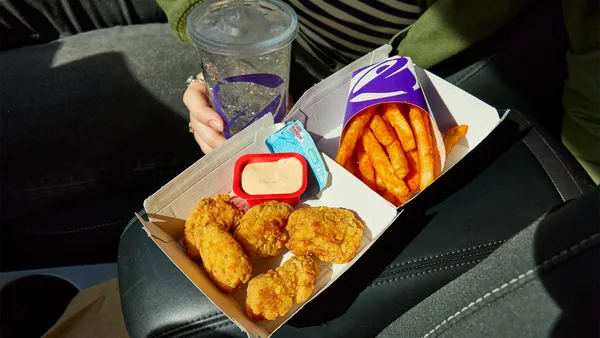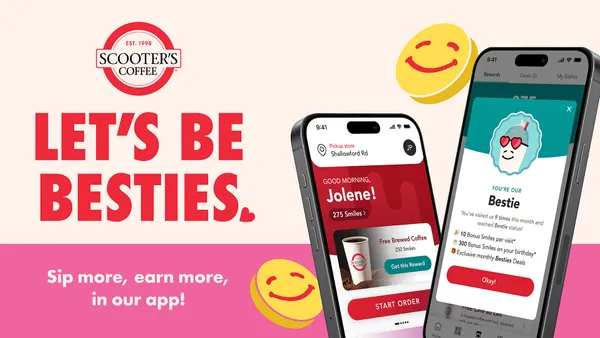Dive Brief:
- Starbucks is launching an NFT marketplace called Starbucks Odyssey, which will be integrated with the company’s loyalty program, it announced Monday.
- Customers will have two paths to accumulating Starbucks NFTs: they can collect digital stamps by completing in-app tasks, like quizzes, or they can buy limited-edition tokens directly through the app via credit card.
- Starbucks’ NFTs “will unlock access to new benefits and immersive coffee experiences,” according to the press release.
Dive Insight:
Starbucks claims it is one of the first chains to tie NFT offerings to its core business, but several major restaurant companies are dabbling in Web3 activations in a bid to grow digital touch points and attract Gen Z customers.
As of Monday, Starbucks customers and employees can join a waitlist to gain access to Starbucks Odyssey, which will go live later this year. The platform will host virtual “journeys,” or interactive games and challenges that will allow users to “deepen their knowledge of coffee and Starbucks.”
“Members will be rewarded for completing journeys with a digital collectible ‘journey stamp’ (NFT),” Starbucks said in a press release. “Members can also purchase ‘limited-edition stamps’ (NFTs) through a built-in marketplace within the Starbucks Odyssey web app experience.”
Starbucks’ NFTs will have a points value based on rarity, enabling holders of the tokens to access rewards ranging from virtual espresso-martini-making classes to trips to the company’s showcase coffee farm in Costa Rica. Users can buy and sell tokens on a marketplace in the company’s app.
Brady Brewer, Starbucks executive vice president and chief marketing officer, said in a press release that the NFT offering was integral to the company’s vision of the future.
“This is just the beginning; Starbucks Odyssey is one of the ways we are reinventing the Third Place to meet our customers wherever they are,” Brewer said.
The NFTs issued by Starbucks are secured with a “proof-of-stake” blockchain, which the brand touts as being more energy efficient than the notoriously inefficient “proof-of-work” systems like Ethereum or Bitcoin. It’s unclear, however, what degree of efficiency Starbucks’ system achieves.
Starbucks’ bet on NFTs comes as weekly trading volumes, as measured by value and by number of sales, continue to erode. The weekly volume of trade in digital collectibles and art objects peaked at $914 million last August, according to the Block.co, a website analyzing market trends in blockchain-related technology. Since then, weekly trade in collectibles has fallen to less than $30 million in value, leaving the long-term value of digital stamps uncertain.
The coffee chain’s NFT offering also goes beyond the Web3 plays of many of its rivals, who have restricted their experiments with this technology to limited-time experiential offers. Pizza Hut offered a virtual shopping experience in May, around the same time Jimmy John’s rolled out a virtual restaurant customers could use to order real custom sandwiches. Wendy’s announced a virtual restaurant in April. That same month, Chipotle added a virtual labor experience to Roblox, offering customers the chance to roll digital burritos in exchange for burrito themed in-game currency. These two initiatives appear to be long-term offerings.















